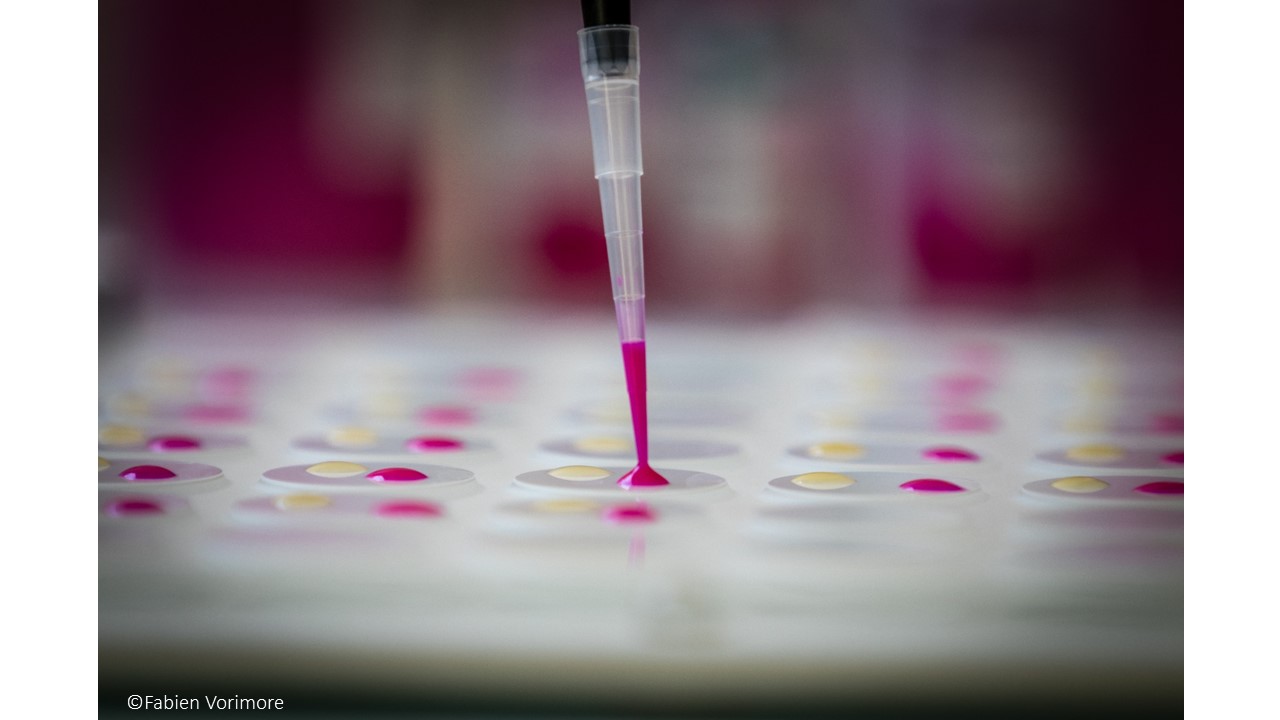Real-time PCR
The Real Time Polymerase Chain Reaction (PCR) or Quantitative PCR is a molecular diagnostic tool used to detect nucleic acids, and in this case Brucella DNA (Bounaadja et al., 2009).
Principle
The present document describes a standard technique aiming at real-time Polymerase Chain Reaction (PCR) to detect the presence / absence of Brucella DNA in animal / human samples. Prior to PCR, the DNA extraction protocols have to be validated for each type of sample handled in the laboratory in order to assure standardized performances. The ID Gene® Brucella spp Triplex (IDBRU) kit is a Reel-time Polymerase Chain Reaction (Rt-PCR) kit for specific Brucella spp. sequence amplification based on TaqMan® technology. This is a qualitative Triplex system that enables simultaneous amplification of the target DNA and internal endogenous and exogenous controls.
Scientific references
HOLZAPFEL M., 2018. De l’épidémiologie moléculaire aux analyses fonctionnelles de Brucella chez les ruminants, une approche intégrée pour l’identification et l’étude de la diversité phénotypique d’un genre génétiquement homogène. Thèse de doctorat en Microbiologie, soutenue le 26-11-2018 à Paris Est, dans le cadre de l’École doctorale ABIES, 200 pages. Online document: http://www.theses.fr/2018PESC1141/document
APHIS is seeking public comment regarding possible removal of some of the Brucella species from the select agent list
[relayed from USDA Animal and Plant Health Inspection Service]
The United States Department of Agriculture’s (USDA) Animal and Plant Health Inspection Service (APHIS) is conducting its biennial review of the select agents and toxins registration list. The Agricultural Bioterrorism Protection Act of 2002 requires the evaluation every two years of all potential animal or plant select agents based on their effects on health, production and marketability of the animals or plants, their ability to cause disease, and whether countermeasures or treatments are available. As outlined in the 2018 Farm Bill, the agency will also evaluate potential select agents based on whether inclusion on the list would have a substantial negative impact on the research and development of solutions for the animal or plant disease caused by the agent or toxin.
Agents on the select agents list and are subject to strong regulations on use and movement in order to protect the American public and agriculture.
APHIS is seeking public feedback on the current list, and whether any updates are appropriate. Specifically, APHIS would like input on the following select agents, which we are considering removing from the list:
- Peronosclerospora philippinensis (Peronosclerospora sacchari)
- African horse sickness virus
- Bacillus anthracis (Pasteur strain)
- Brucella abortus, Brucella suis, and Brucella melitensis; and
- Venezuelan equine encephalitis virus.
In the Federal Register posting, APHIS provides background on each of these select agents and the reason(s) they might be appropriate to remove from the list. To view this information and provide comment, visit http://www.regulations.gov/#!docketDetail;D=APHIS-2019-0018. After a 60-day public comment period, all feedback will be shared with APHIS’s working groups to consider during the review process. After completing the review, APHIS will either republish the list or propose changes through the rulemaking process.
